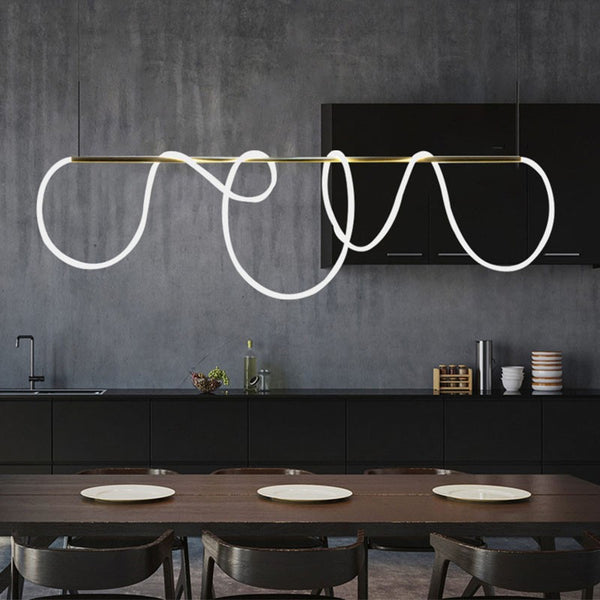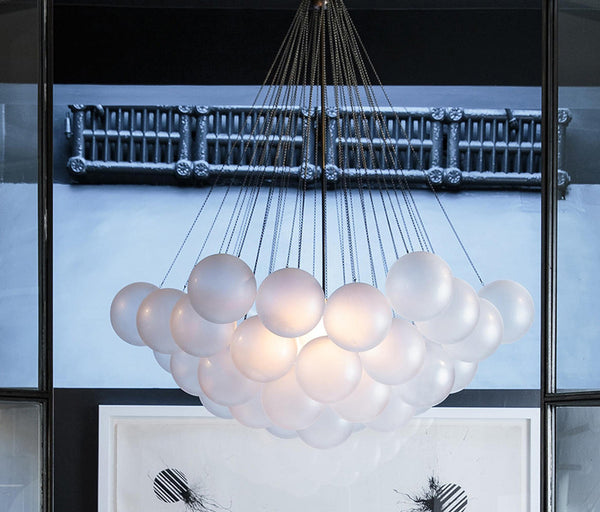How to Choose Dining Room Lighting? Mastering the Art of Illumination
Selecting the perfect lighting for your dining room is pivotal in creating an inviting and visually stunning space. Beyond mere functionality, dining room lighting serves as a showcase of your personal style, setting the ambiance for your entire home. From pendant placement to chandelier size, it's crucial to consider your space and existing furniture before making lighting decisions. Here, we delve into our top tips for choosing dining room lighting to help you master the art of illumination.

1. Above Your Table: Ambient Light
Pendants: Opt for a single pendant to make a modern statement or experiment with two or three smaller pendants for a unique look. Consider the scale of your room and customize the length accordingly. The Reedway Pendant is an excellent choice, offering warm light and sculptural elegance.
Chandeliers: Similar to pendants, chandeliers should complement the size of your space and dining table. Play with scale by choosing an oversized chandelier, such as the Altona Chandelier, for a modern touch. For round tables, consider a classic fixture like the Winfield Chandelier or the artisan-made elegance of the Willamette Chandelier.
Flush-Mounts: Ensure that flush mounts align with the size of your space. For smaller areas or casual eat-in nooks, an elegant flush mount like the Conifer Flush Mount adds an understated look. Alternatively, a semi-flush mount that descends a couple of inches can add dimension.
2. Selecting a Shade:
Linen: Choose fabric linen shades for an inviting glow perfect for dining spaces. Opt for lighter shades like beige or white for brighter ambient light, or go for a black linen shade for a subtle, moody atmosphere.
Clear Glass: Illuminate your entire space with bright ambient light by choosing a clear glass shade, ideally paired with a filament bulb.
Opal Glass: For bright, 360-degree light with a more diffused glow than clear glass, opt for an opal glass shade.
Metal: Direct light downward with a metal shade, making it an ideal option for low-key lighting above your table or as accent lights by a sideboard.
3. Ceiling Light Measurements:
Diameter: Calculate the sum of your dining room's length and width in feet. The result equals the diameter (in inches) your light fixture should be. For instance, a 14x10-foot room needs a 24-inch-wide light fixture.
Length: For ceiling lighting, consider how far down you want the fixture to hang. The bottom of a pendant should be 30 inches from the surface of your dining table. When redecorating your space, note the height of your new table when planning your lighting.
4. Around Your Table: Accent Light
Wall Sconces: Create a warm glow and set an inviting tone with wall sconces. Place them above your mantel or sideboard to highlight artwork or illuminate a buffet setup.
Table Lamps: For smaller dining spaces, consider a table lamp up to 32 inches in height on a side table or sideboard for added texture and personality. To avoid glare, keep in mind the level height when sitting at the dining table; the bottom of the shade should be at eye level.

For larger lamp options, choose one of our buffet-style lamps that are up to 40 inches high. A 75-watt bulb provides ample light, making a pair of buffet lamps a great complement to a single ceiling fixture.
5.Accent Light Measurements:
Sconce Height: For wall sconces, height may be a personal preference. Before installing your pieces, get a general idea of how high you want them by placing a piece of tape on the wall and considering proximity to furniture. Overall, keep in mind the typical eye level in the space. While sconces should be about 60 to 72 inches from the ground for standing eye level in a hallway, in a dining room, we recommend the height should be closer to 60 inches since a majority of the time people will be seated at the dining table.
If you're adding sconces above a mantel or sideboard, a slightly higher placement is ideal. For rooms with ceilings above nine feet, place sconces a bit higher—at 66 to 72 inches—and make sure there isn’t any glare or visible mechanics from the underside of the sconce.
Furniture Size: Consider the size of your credenza, sideboard, or buffet when deciding on lighting. For a more classic look, add a set of sconces above or on either side of the piece of furniture. Two table lamps add a more contemporary twist. Sconces should be placed at eye level and centered above the surface inset from the edge of the piece on either end by a few inches. For lamps, the height should be around two-thirds the height of the piece of furniture. However, if your sideboard or storage piece is on the taller side, smaller table lamps may be more successful in preventing glare.
By incorporating these expert tips into your decision-making process, you can confidently choose dining room lighting that not only meets your functional needs but also enhances the aesthetic appeal of your entire dining area. Explore our selection to find timeless fixtures for a dining room update that suits your taste.


















